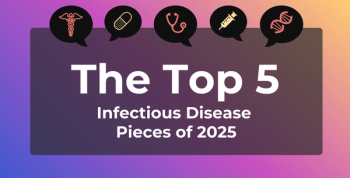
Newly Identified MicroRNA Signatures Could Reshape Pediatric ALL Diagnosis, Study Says
Diagnosis pediatric acute lymphoblastic leukemia (ALL) can be a costly and cumbersome experience. New research has identified microRNA signatures that could simplify the process of diagnosis and classifying the cancer.
New research into the microRNA signatures of pediatric acute lymphoblastic
The study,
Lekha Dinesh Kumar, PhD, the study’s corresponding author, told The American Journal of Managed Care® that the study could be particularly meaningful in low- and middle-income countries where significant numbers of patients have difficulty paying for medical care. Dinesh Kumar is the senior principal scientist at the Centre for Cellular and Molecular Biology in Hyderabad, India. She said the current diagnostic paradigm of flow cytogenetic immunotyping is cumbersome and cost-prohibitive for many patients.
“Most of the people [in India] are unable to pay for their diagnosis,” she said. “...we thought that we should find some biomarkers that can be used.”
To do so, the team collected 50 samples from Ph-negative ALL patients who had more than 90% blast cells. The patients ranged in age from 3-14 years. Equal numbers of peripheral blood and bone marrow samples were collected from each patient. In addition, the team used 20 specimens as controls: 10 were peripheral blood samples from healthy volunteers and the other 10 were bone marrow specimens collected for reasons not related to ALL.
The investigators used microarray analysis on the specimens using 2 independently performed high fidelity array platforms, and then validated unique and common gene signatures using TaqMan individual assays. The authors then performed survival analysis on samples from each set.
The analysis yielded characteristic signatures that can be used to distinguish between T-ALL and B-ALL. Furthermore, they found 51 novel microRNAs associated with pediatric ALL that had not previously been reported.
“Interestingly, the present study also revealed endogenous similarities and differences between blood and bone marrow within each ALL subtype,” Dinesh Kumar and colleagues wrote.
When they performed a Cox regression analysis on the 51 microRNAs, they found that 11 microRNAs were associated with patient survival. Two of the 11 were found to be protective; the other 9 were associated with higher risk.
The authors believe these microRNA signatures could be used to help classify subtypes and predict outcomes in patients with pediatric ALL. Doing so would streamline the diagnostic process. Dinesh Kumar said such information could be used to identify the most appropriate treatment strategies for individual patients, and to develop novel therapies to treat the
For instance, in the study, the authors noted that a comparison of a proteome comparison between patient groups and the control specimens showed differential expression of proteins commonly associated with different cancers.
“Recent studies suggest the involvement of prolactin inducible protein as [a] survival factor in seminal plasma of ALL patients, which also correlated with our studies,”2 the authors write. “Detailed studies are needed to compare protein dynamics in the subtypes of ALL that might lead to an interesting outcome.”
Dinesh Kumar said her team is currently looking for partners to help commercialize their findings as a diagnostic tool. They hope that doing so can eventually lead to a new paradigm in the diagnosis of ALL, one that is more accessible and less burdensome for patients and their families.
References
- Nair RA, Verma VK, Beevi SS, et al. MicroRNA Signatures in Blood or Bone Marrow Distinguish Subtypes of Pediatric Acute Lymphoblastic Leukemia Transl Oncol. Published online June 9, 2020. doi:10.1016/j.tranon.2020.100800
- Jain P, Ojha SK, Kumar V, Bakhshi S, Singh S, Yadav S. Differential seminal plasma proteome signatures of acute lymphoblastic leukemia survivors. Reprod Biol. 2019;19(4):322-328. doi:10.1016/j.repbio.2019.11.002
Newsletter
Stay ahead of policy, cost, and value—subscribe to AJMC for expert insights at the intersection of clinical care and health economics.








































